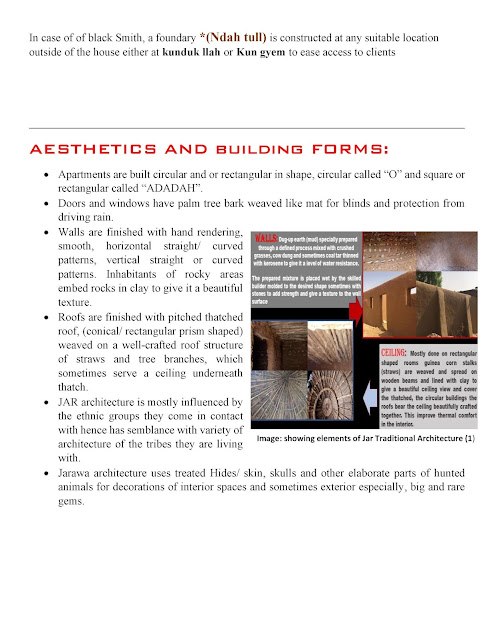The diversity of culture and African traditions can never be over emphasized, our artifacts are rich in arts that are supremely well-organized forms, extremely beautiful, and above all depicts a mystical, emotional, historical and religious messages decoded and preserved in perfect and sophisticated intelligence.
In the course of studying the PLATEAU JAR ARCHITECTURE, my findings, are amazing stories full of wisdom and technicality, coded with spirituality and elegance, even though grossly under documented, at the verge of being swallowed by larger societies JARAWA has a pronounced architecture that is scientific, philosophic and sustainably eco-friendly, that can be celebrated as a cultural identity. Traveling back in time from documented histories, words of the elders, and physical encounters with Jar architecture, my research has gifted me the following elements of JARAWA ARCHITECTURE among many more:
“The kingdoms of west-Africa share many important aspects; pottery, ironworks but also a history of telling their stories through art. These things were and will always be truly African.” Dr. Gus Casely-Hayford.










Comments
Post a Comment
Disclaimer: Your opinions expressed in this comment section are of yours alone and not of CPDI Africa.